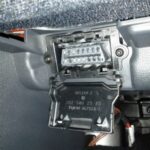Understanding your car’s health in real-time is no longer a task solely for mechanics. With the advent of OBD2 scanners, car owners can now access a wealth of data about their vehicle’s performance and diagnose potential issues from the comfort of their garage. For Mac OS X users, integrating OBD2 diagnostics into their digital ecosystem offers a powerful way to monitor and maintain their cars.
OBD2, or On-Board Diagnostics II, is a standardized system present in most vehicles manufactured after 1996. It allows you to tap into your car’s computer to read various parameters, from engine temperature and speed to fault codes that signal problems. An OBD2 scanner acts as the interface, connecting to your car’s OBD2 port and communicating with your devices, including potentially your Mac.
While dedicated OBD2 scanner software might be more commonly associated with mobile platforms, Mac OS X can still play a crucial role in your car diagnostics workflow. Here’s how:
Leveraging Mac OS X for OBD2 Data Analysis and Research
-
Fault Code Research: When your OBD2 scanner, like the Car Scanner app, detects a Diagnostic Trouble Code (DTC), your Mac becomes an invaluable tool. The Car Scanner app, even on iOS, can display and reset DTC fault codes and provides a vast database of DTC code descriptions. You can use your Mac to further research these codes online, accessing detailed explanations, potential causes, and recommended fixes from various automotive resources and forums. This deeper dive using your Mac’s browser can significantly enhance your understanding beyond the basic code description provided by the app.
-
Data Logging and Analysis: Many OBD2 scanner apps, including Car Scanner, allow you to log sensor data in real-time. While the initial data capture might happen via a smartphone or tablet connected to the OBD2 adapter, your Mac can be used for more in-depth analysis of this logged data. You can export data logs from apps and import them into spreadsheet software or other data analysis tools available on Mac OS X. This allows for visualizing trends, comparing data over time, and gaining a more nuanced understanding of your car’s performance metrics.
-
Software and Compatibility Research: If you are looking for specific OBD2 software or tools, your Mac is the perfect platform for research. You can use it to find information on OBD2 adapter compatibility, software options (even if primarily for mobile, understanding their features on a Mac browser is helpful), and online communities related to car diagnostics and OBD2 on different platforms. This research can inform your choices when selecting OBD2 adapters and apps for your car diagnostic needs.
Choosing the Right OBD2 Adapter and App
To utilize OBD2 effectively, you’ll need a compatible OBD2 adapter that plugs into your car’s diagnostic port. These adapters typically use Wi-Fi or Bluetooth to communicate with your devices. While Car Scanner specifically mentions compatibility with iOS and Android, the fundamental principles of OBD2 data access remain consistent.
When selecting an adapter, consider reputable brands like Kiwi 3, Viecar, V-Gate, Carista, LELink, and Veepeak. Be cautious of very cheap, unbranded adapters, especially those marked v.2.1, as they are often unreliable and can cause connection issues or even interfere with your car’s electronics.
Conclusion: Mac OS X as Your OBD2 Command Center
While “Obd2 Mac Os X” might not directly refer to dedicated OBD2 software running natively on macOS, your Mac is far from irrelevant in the world of car diagnostics. It serves as a powerful hub for researching fault codes, analyzing data logs obtained from OBD2 scanners and apps like Car Scanner (primarily used on iOS/Android), and finding resources to enhance your car maintenance knowledge. By combining the real-time data access of OBD2 scanners with the analytical and research capabilities of your Mac OS X system, you can take a proactive and informed approach to car ownership, ensuring your vehicle runs smoothly and efficiently.
